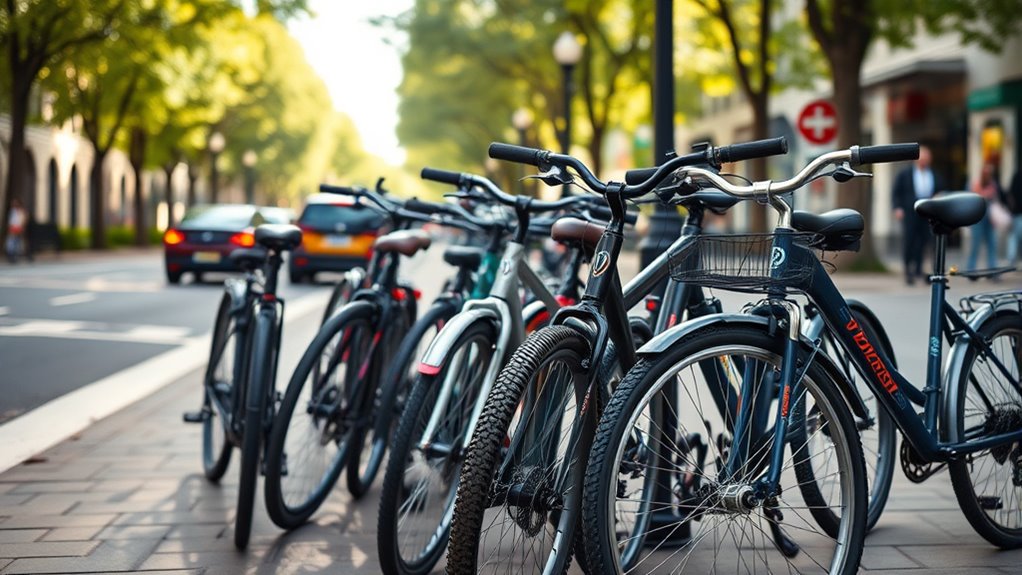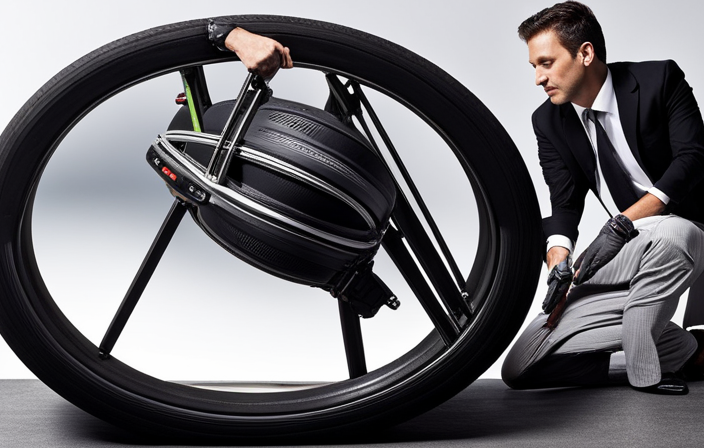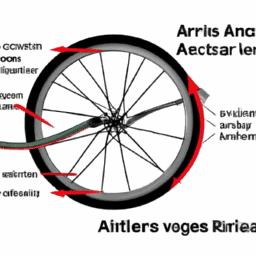To choose the right bike for your commute, first assess your route and terrain to determine the best type, gear, and tire needs. Consider your budget and storage options to find a model that fits your space and safety requirements. Pick a frame style and material that suits your ride style and comfort preferences. Match the bike’s features to your daily needs, and if you keep exploring, you’ll gain even more helpful tips for making the best choice.
Key Takeaways
- Assess your route’s terrain, distance, and surface type to determine suitable bike features and gear options.
- Consider your storage space and portability needs when choosing between foldable, compact, or standard bikes.
- Select a frame style and material that aligns with your durability, comfort, and budget preferences.
- Match gearing and safety features, like brakes and lighting, to your terrain and visibility requirements.
- Ensure the bike fits your size and riding style, and includes necessary accessories for comfort and safety.
Assess Your Route and Terrain
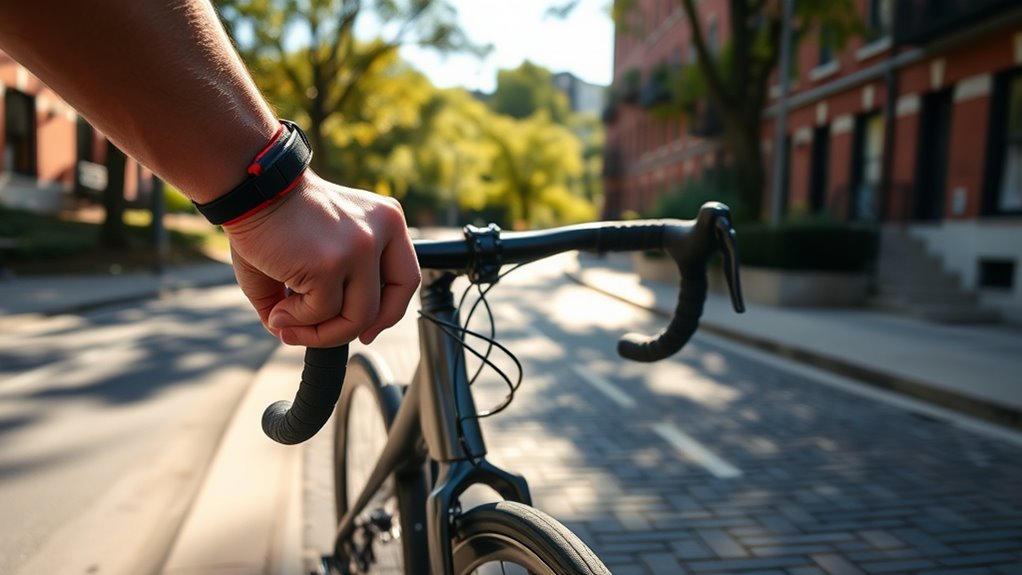
To choose the right bike, start by evaluating your route and terrain. Think about whether your route mainly includes flat city streets or hilly terrain, which determines if you need a bike with multiple gears or a single speed. Consider the surface type—paved roads, gravel paths, or off-road trails—to decide between road, hybrid, gravel, or mountain bikes. If your commute covers long distances, a lightweight bike or an electric assist model might be best. Also, assess obstacles along your route, like stairs, transit stations, or tight storage spaces, which influence the bike’s portability and folding features. Additionally, be mindful of retail hours for bike shops in your area to plan your visits for professional fitting or maintenance. Understanding your route and terrain helps in selecting a bike with the appropriate gearing system, ensuring a smoother ride over your daily commute. Choosing a bike with the right tire pressure can also enhance your riding comfort and efficiency. Being aware of bike tire longevity in storage can also help you maintain your bike and avoid unexpected flats. By understanding your route and terrain, you’ll be better equipped to select a bike that suits your commuting needs and makes your ride smooth and comfortable.
Determine Your Budget and Storage Options
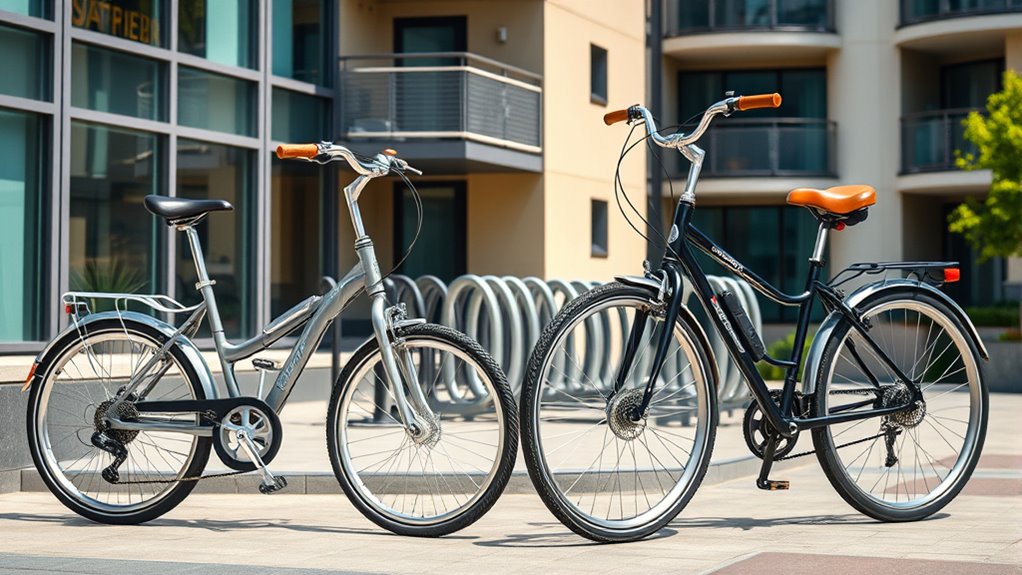
Evaluating your budget and storage options is essential before choosing a bike, as these factors directly influence your choices in models and features. Start by appraising your budget, including ongoing costs like maintenance and accessories, to find a bike that offers good value. Consider your storage space at home, work, and during transit; a compact, folding bike may be ideal if space is limited or portability is a priority. If security is a concern, look for bikes with features that facilitate safe storage, such as racks or lockable options. Matching your storage capacity with a lightweight, foldable design ensures easy transport and convenience. Additionally, understanding the different cost factors in leasing can help you make informed financial decisions while researching options. Exploring bike security features can further optimize your storage solutions. Incorporating vertical storage solutions into your space planning can maximize available storage and protect your bike from theft or damage. To make the most of your storage, consider automation and smart storage systems that can improve security and accessibility. Ultimately, balancing your budget with your storage needs helps you select a bike that’s practical, secure, and suited to your commuting lifestyle.
Choose the Appropriate Frame Style and Material
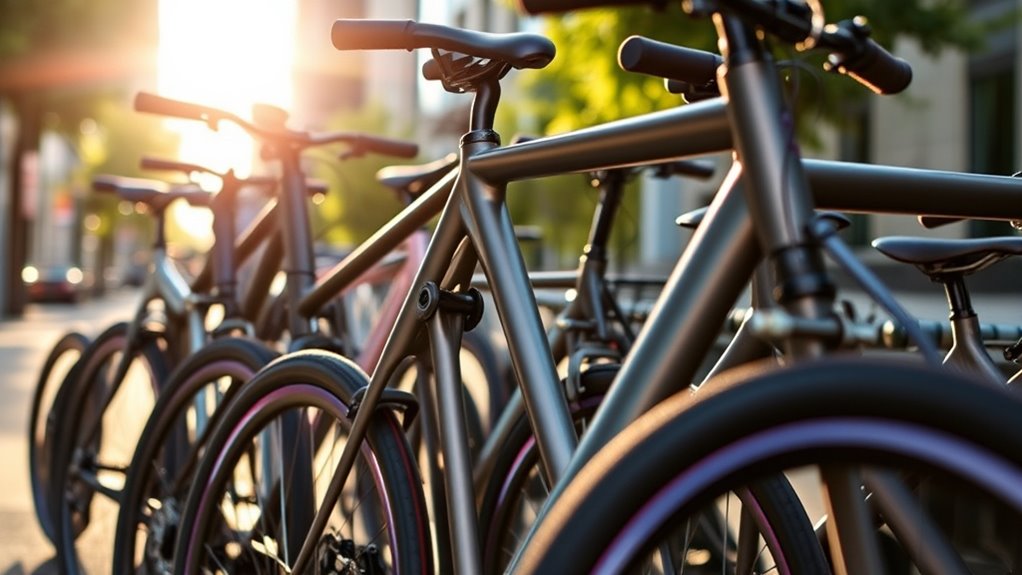
Choosing the right frame style and material depends on your riding needs and preferences. Your choice affects weight, ride comfort, and repairability. Consider a diamond frame for durability and classic style, ideal for longer or more intense commutes. If you prefer easy mounting, a step-through frame offers convenience and accessibility. When selecting material, steel and chromoly steel frames provide durability, excellent shock absorption, and easier repairs, though they tend to be heavier. Aluminum frames are lightweight and budget-friendly, but they can deliver a harsher ride and are harder to repair over time. Carbon fiber offers a lightweight, responsive ride but comes at a higher cost and is more vulnerable to impacts. Your ideal choice balances your comfort, mobility, and repair needs. Additionally, considering a bedroom setup that promotes comfort and organization can enhance your overall riding experience by creating a relaxing space to unwind after your commute.
Select Gearing and Safety Features
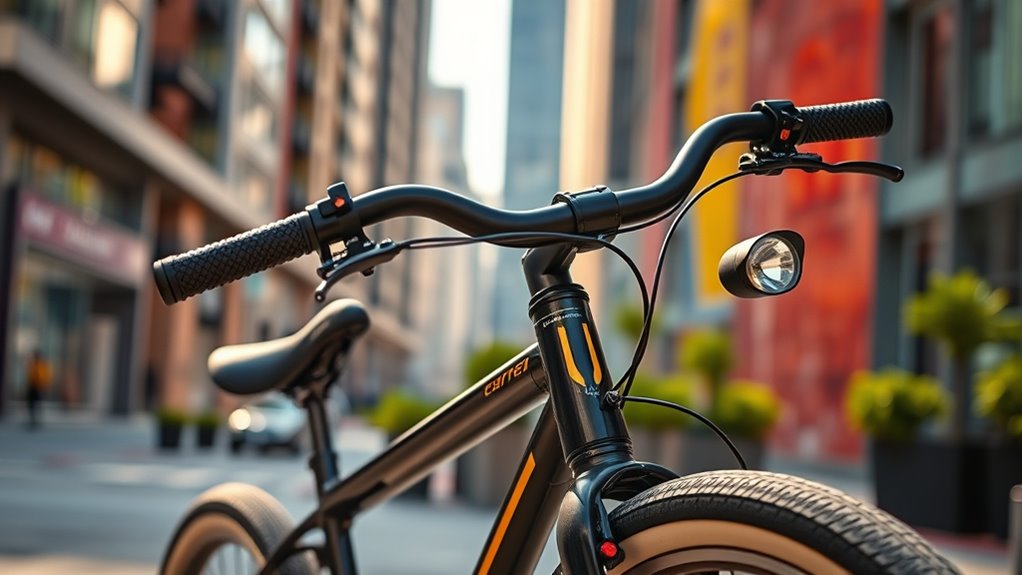
How you select gearing and safety features can considerably impact your riding experience and safety. Your gearing system should match your terrain; a 12-speed offers easier pedaling on hills, while single-speed bikes suit flat routes. Opt for brakes with strong braking power—hydraulic disc brakes excel in all weather conditions, offering reliable stopping, while mechanical disc brakes are more budget-friendly but need more maintenance. Wider tires with good tread provide better grip and stability, especially on uneven or wet surfaces. Safety features like lighting, reflectors, and a bell or horn increase your visibility and communication with others on the road. Choosing the right brake type and maintaining your safety features guarantees a safer, more efficient commute, no matter the conditions. Regular maintenance and home cleaning tips can also help keep your bike in top condition, preventing dirt and grime buildup that can affect performance.
Match the Bike to Your Personal Needs and Preferences
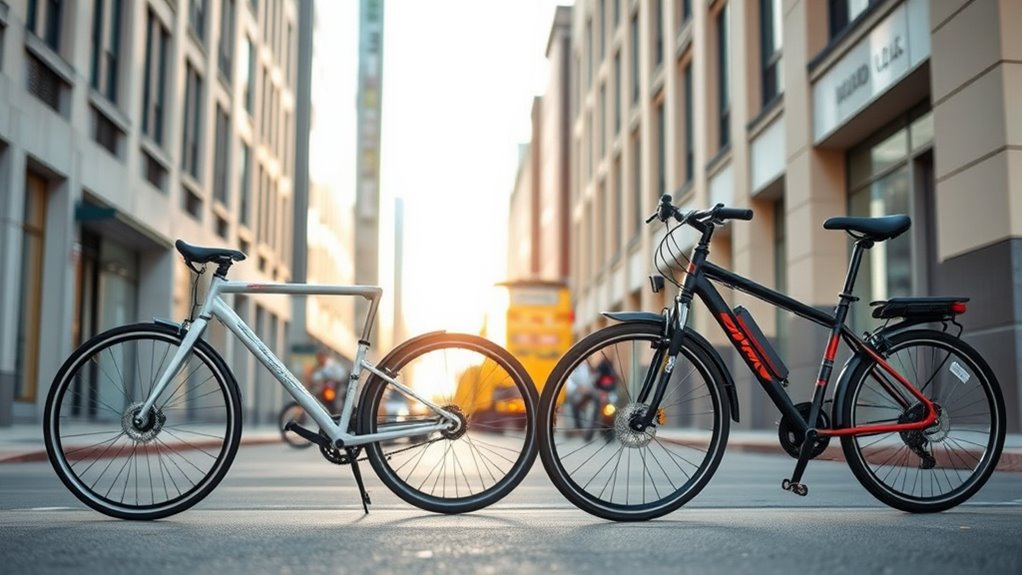
Matching your bike to your personal needs and preferences guarantees a comfortable and enjoyable ride. To do this, consider the right bike size by measuring your inseam and consulting sizing charts for proper fit. Think about your riding terrain—flat city streets, hilly areas, or rugged trails—and select a bike type like a hybrid or mountain bike accordingly. Evaluate your commute distance and load-carrying needs to choose gear options, racks, and frame materials that suit your routine. Decide on electric assistance if hills are tough or convenience matters, or opt for traditional bikes if you prefer simplicity. Focus on safety features such as disc brakes and lights to enhance visibility and security. Additionally, understanding different bike types can help you select the most suitable model for your specific commuting conditions. Exploring vehicle tuning options can sometimes help optimize your bike’s performance or comfort features. Being aware of tuning options for vehicles can also inform your decision if you are considering modifications to improve performance or comfort. Ensuring your bike has appropriate maintenance can extend its lifespan and keep it performing well for daily commuting. Considering eye patch benefits can also contribute to overall well-being, especially if you use eye patches as part of your self-care routine. Your perfect bike aligns with your terrain, comfort, and lifestyle.
Frequently Asked Questions
How to Choose a Bike for Commuting?
When choosing a bike for commuting, think about your route and distance. Pick a frame material that matches how often you ride and the terrain. Decide if you want electric assistance for hills or longer trips. Look for safety features like disc brakes and lights. Make sure the bike fits you well by measuring your inseam and checking sizing charts. This way, you’ll stay comfortable and safe every day.
Which Bike Is Best for Daily Commute?
Imagine cruising smoothly through busy city streets, your bike effortlessly steering varied surfaces. For daily commuting, a hybrid bike like the Specialized Sirrus X 5.0 is ideal, offering speed, comfort, and versatility. It handles potholes and pavements alike, keeping you balanced and steady. If hills tire you out, consider an electric hybrid like the Whyte Rheo 3, which provides pedal assistance, making your ride easier and more enjoyable every day.
What Is the Number 1 Rule for Bicycles?
The number one rule for bicycles is to guarantee it fits you properly. When your bike fits well, you’ll be more comfortable, safe, and efficient while riding. Make sure the saddle height and handlebar position are correct, and that the frame size suits your body. A good fit reduces strain, prevents injuries, and boosts confidence, making your commute more enjoyable and sustainable. Always prioritize fit over style or features.
What Is a Reasonable Bike Commute to Work?
A reasonable bike commute to work typically falls between 3 and 10 miles, depending on your fitness and local conditions. If your trip is under 5 miles, biking is usually practical and offers good exercise. For longer distances, like over 10 miles, consider an e-bike to make the ride easier and less time-consuming. Keep in mind safety, terrain, and weather when planning your daily ride.
Conclusion
Now that you know how to match your route, budget, and preferences, you’re ready to ride with confidence. Remember, selecting the right bike blends balance and belief—believe in your choice and embrace the journey. With the perfect fit, you’ll feel fantastic, free, and fueled for every commute. So, gear up, get going, and enjoy the exhilarating experience of your ideal bike—your trusty two-wheeled partner for every adventure ahead!
